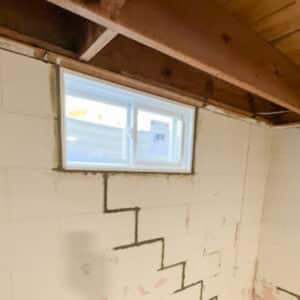Bringing Your Home Up to Code: Understanding Egress Window Requirements Before It’s Too Late
If your home was built before the early 2000s, there’s a good chance it doesn’t meet modern egress window requirements—and that could put your family at risk. While egress windows are often associated with basement bedrooms, the truth is they’re a vital component of home safety. Failing to meet code isn’t just a technicality—it can mean the difference between life and death in an emergency.
In this blog, we’ll break down what the current egress window requirements are, why they exist, and how to determine whether your home is compliant. The longer you wait to bring your home up to code, the more dangerous (and expensive) things can become.
Why Egress Windows Matter
Egress windows are designed as emergency escape routes for occupants—and as access points for firefighters. According to the Illinois State Fire Marshal, all sleeping areas must have a secondary means of escape that meets specific size and operability standards.
These aren’t just suggestions. They are part of national and state building codes that exist to save lives. Without compliant egress windows, a basement bedroom can turn into a trap during a fire or gas leak. Even a first-floor bedroom can become deadly if the door is blocked and the window is too small to exit.

What Are the Current Egress Window Requirements?
Here are the minimum code requirements for an egress window, based on national standards and Illinois state guidelines:
– Minimum opening area: 5.7 square feet (5.0 sq ft for ground floor windows)
– Minimum opening height: 24 inches
– Minimum opening width: 20 inches
– Maximum sill height from the floor: 44 inches
– Window must be operable from the inside without keys, tools, or special knowledge
– Window wells (for below-grade windows) must:
Allow the window to fully open
Have a minimum 9 square feet of floor area (min. 36” length/width)
Include a ladder if the depth is more than 44 inches
If your basement bedroom window is too small, doesn’t fully open, or is placed too high on the wall, it’s not just inconvenient—it’s illegal and unsafe.
The Hidden Risks of Non-Compliance
Many homeowners are unaware that their finished basement or converted bedroom is not code-compliant. You may have inherited the issue from a previous owner—or had work done before the codes were updated.
But if a fire breaks out, code ignorance won’t protect you or your family. Worse, non-compliance can:
– Invalidate your homeowners insurance in the event of a claim
– Cause failed home inspections when it’s time to sell
– Reduce your home’s appraised value
– Delay or prevent renovation permits
Waiting until an emergency—or a real estate deal—is not the time to find out your windows are too small to save a life.

How to Check Your Home’s Compliance
Why You Shouldn’t DIY This
Not sure if your home meets current egress window requirements? Here’s how to check:
Measure the clear opening (not just the frame)
Check the height of the sill from the floor
Open the window—does it open fully and easily?
For basements, measure the window well and make sure it meets size and ladder requirements
If any of these measurements fall short, it’s time to take action.
Installing a code-compliant egress window involves cutting into your foundation, ensuring proper drainage, and meeting precise measurements. Improper installation can lead to:
– Water intrusion and mold
– Foundation cracks
– Failed inspections
– Safety hazards
This is a job for experienced professionals. At Force Basements, we’ve helped countless Illinois homeowners bring their properties up to code—safely, efficiently, and in full compliance with state regulations.
Don’t Wait Until It’s Too Late
Upgrading your home to meet egress window requirements isn’t just a box to check—it’s an investment in your family’s safety and your property’s value. If your home is older, has a finished basement, or includes bedrooms below grade, now is the time to act.
Contact Force Basements today for a free egress window evaluation. We’ll help you ensure your home is safe, code-compliant, and ready for anything.




